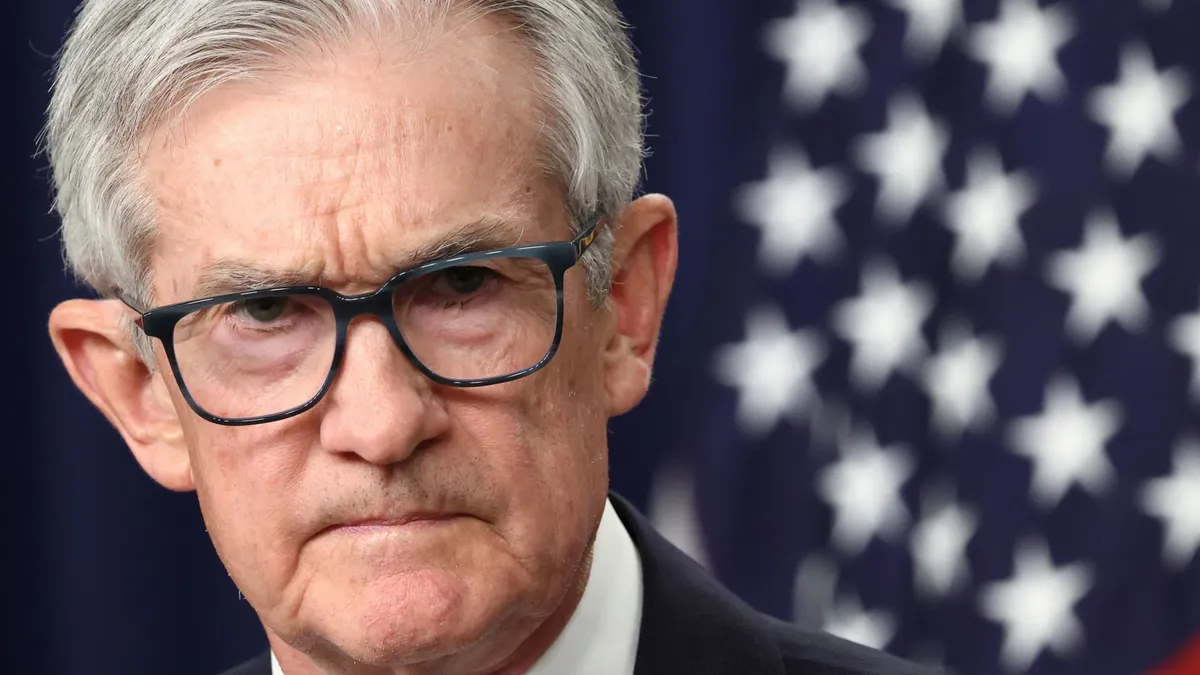
In March, during a crucial meeting of the Federal Open Market Committee (FOMC), U.S. President Donald Trump had not yet implemented his controversial reciprocal tariffs on international trade. However, Federal Reserve policymakers were already preparing for the potential repercussions of these trade barriers. At the end of this meeting, the FOMC revised its economic forecast for the U.S. downwards while simultaneously increasing its inflation projections. Fed Chair Jerome Powell indicated that a significant portion of this pessimistic outlook was due to the anticipated impacts of tariffs.
On April 2, Trump surprised even the most pessimistic market analysts by announcing a list of tariffs that exceeded expectations on numerous countries. Although he has since put a pause on these tariffs, the Federal Reserve continues to operate under the uncertain premise that Trump may reinstate these hefty levies at any time. During the FOMC's recent meeting, which concluded on Wednesday, Powell was more direct than in previous discussions, openly attributing the economic forecast to Trump's tariffs. He warned that these tariffs could lead to increased inflation, slower economic growth, and higher unemployment—conditions that could create a stagflationary environment.
In a significant move, the U.S. Federal Reserve decided to maintain its key interest rate, keeping it steady in a range between 4.25% and 4.5%, where it has remained since December. In his post-meeting press conference, Powell reiterated that Trump's reciprocal tariffs were considerably larger than anticipated, warning that they could significantly contribute to rising inflation, an economic slowdown, and an uptick in unemployment rates.
In related economic news, a report from The New York Times suggests that Britain is on the verge of signing a trade deal with the U.S. This announcement came after Trump indicated on Wednesday that a briefing regarding the trade deal would take place the following day, although he did not disclose specific details. If finalized, this trade deal could mark Britain as the first country to secure an agreement following Trump's imposition of tariffs on U.S. imports in April. However, it remains unclear whether the two nations will finalize a comprehensive deal or merely establish a framework for future negotiations.
On Wednesday, U.S. stock markets experienced a positive surge. The S&P 500 index rose by 0.43%, while the Dow Jones Industrial Average gained 0.7%, significantly boosted by a 10.8% increase in Disney shares. Furthermore, the Nasdaq Composite climbed 0.27%, thanks to rising shares of Nvidia. In the Asia-Pacific region, markets also saw gains on Thursday, with Hong Kong's Hang Seng Index increasing by approximately 0.6%, driven by a remarkable 75% rise in shares of the Chinese bubble-tea brand Auntea Jenny on its debut trading day.
In other significant developments, Nvidia shares jumped by 3.1% as the Trump administration made moves to revoke the AI diffusion rule. This rule, originally proposed by the Biden administration, classified countries into three tiers, each with distinct restrictions on the export of advanced artificial intelligence chips, such as those manufactured by Nvidia and Advanced Micro Devices, without requiring a license.
In a noteworthy statement, Eddy Cue, Apple's services chief, suggested that AI search engines may eventually replace traditional ones like Google. This revelation led to a decline in Alphabet shares by 7.5% and a 1.1% drop in Apple shares. Additionally, Apple is seeking court approval to resume charging a commission on in-app transactions that link to external payment processes, arguing that the prohibition could result in substantial financial losses for the company.
Looking ahead, Trump hinted during a meeting with Canadian Prime Minister Mark Carney that he plans to make a significant announcement before his upcoming trip to the Middle East next week. In light of this, JPMorgan is advising its clients on how to navigate potential market shifts that may arise from this announcement.